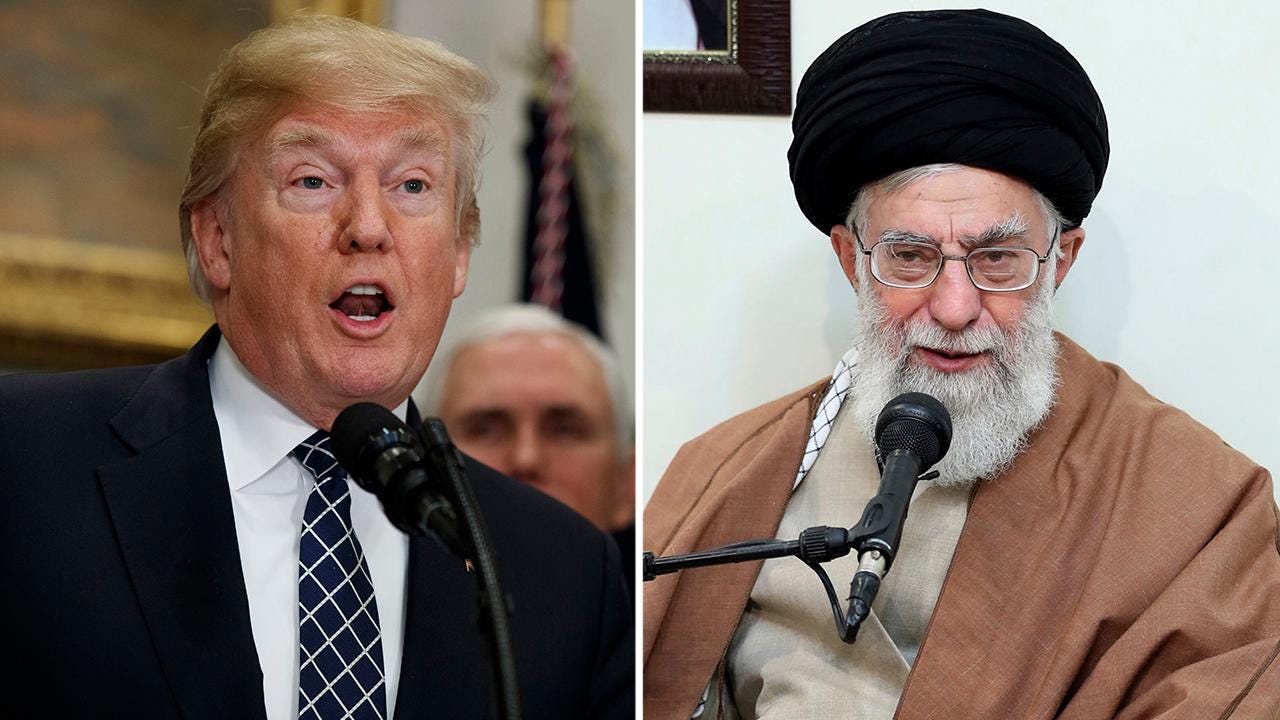Trump's Renewed Commitment to Restoring Maximum Pressure on the Islamic Regime in Iran
President Trump said on Tuesday that he had “left instructions” for Iran to be “obliterated” if its assassins killed him, on the day that he signed the executive order.
Key Measures in the Executive Order
President Trump’s new executive order outlines a multifaceted approach to restricting Iran’s ability to progress toward nuclear armament, supporting terror and destabilizing the Middle East. The Secretary of the Treasury is mandated to impose maximum economic pressure on the Iranian government, including sanctioning entities that violate existing U.S. sanctions. This includes businesses in shipping, insurance, and port operations that engage with Iranian entities. President Trump said on Tuesday that he had “left instructions” for Iran to be “obliterated” if its assassins killed him, on the day that he signed an executive order.
The Secretary of State is directed to modify or rescind existing sanctions waivers and work in conjunction with the Treasury to drive Iran’s oil exports to zero, depriving Tehran of crucial revenue streams. The United States Permanent Representative to the United Nations will collaborate with key allies to reinstate international sanctions on Iran, reinforcing global opposition to its nuclear and military expansion.
The Attorney General is instructed to investigate and prosecute Iranian-sponsored operatives, financial networks, and front groups within the United States, targeting Iran’s clandestine influence.
The Importance of Maximum Pressure
The reinstated maximum pressure campaign is intended to systematically dismantle Iran’s ability to develop nuclear weapons and intercontinental ballistic missiles. Additionally, it seeks to neutralize terrorist networks. Iran has been a key sponsor of terror groups such as Hezbollah and Hamas, which have threatened regional stability, and killed numerous American and Israeli civilians. By cutting off financial and logistical support, the U.S. aims to weaken these groups significantly.
Furthermore, the campaign counters Iran’s military expansion. Tehran has aggressively developed missile technologies and other asymmetric warfare capabilities. The executive order is designed to constrain these efforts and mitigate Iran’s ability to threaten neighboring nations and U.S. interests.
As President Trump prepares to reinstate the maximum pressure campaign against Iran’s regime today, last month the organization United Against Nuclear Iran (UANI) produced a recommended action plan outlining steps the president could take in his first 100 days to build out the campaign. The Trump administration has already implemented two steps in UANI's proposed plan: designating the Houthis as a Foreign Terrorist Organization (FTO) and initiating work with U.S. allies and partners to invoke the snapback sanctions mechanism.
The Broader Geopolitical Implications
The Trump administration argues that past policies, including the Obama-era Joint Comprehensive Plan of Action (JCPOA), failed to prevent Iran from progressing toward nuclear capability. By reapplying maximum pressure, the administration aims to deter Iran’s nuclear aspirations, making nuclear development financially and logistically untenable for Iran.
Additionally, the administration seeks to strengthen regional stability by aligning with allies such as Israel and Saudi Arabia to maintain security in the Middle East and prevent Iran from asserting dominance. Trump has also indicated a willingness to negotiate a new agreement, but only under conditions that completely dismantle Iran’s nuclear infrastructure and curb its sponsorship of militant organizations.
Iran’s regional influence has suffered significant setbacks, weakening its so-called "Axis of Resistance." Israel’s security forces have crippled the leadership of Iran’s two most potent allied militias, Hamas in Gaza and Hezbollah in Lebanon. The surprise collapse of Bashar al-Assad’s government in Syria has further undermined Tehran’s position, cutting off crucial supply routes to Hezbollah. Meanwhile, Yemen’s Houthi rebels continue to attack shipping traffic through the Red Sea, but Israeli counterstrikes have diminished their operational capacity.
Iran has also recognized that Russia, its most important ally outside the Middle East, is too preoccupied with Ukraine to provide meaningful support. This has left Tehran isolated and struggling to maintain its regional stronghold. Additionally, Israeli strikes on Iranian missile defenses and nuclear infrastructure in 2024 further exposed Iran’s vulnerabilities. Despite, Iran remains to possess a massive stockpile of missiles and drones, which pose a significant threat to the U.S. and Israel.
The Path Forward
President Trump's executive order marks a renewed commitment to preventing Iran from developing nuclear weapons and countering its malign activities. Through a combination of economic sanctions, diplomatic efforts, and legal actions, the administration aims to safeguard U.S. national security interests while reinforcing stability in the Middle East.
The success of this strategy remains to be seen, as Iran’s leadership may either seek alternative pathways to sustain its nuclear program or be forced back to the negotiating table under economic and political strain. Either way, the world is watching closely as the Trump administration reintroduces a hardline approach to one of the most persistent and complex geopolitical challenges of our time.



